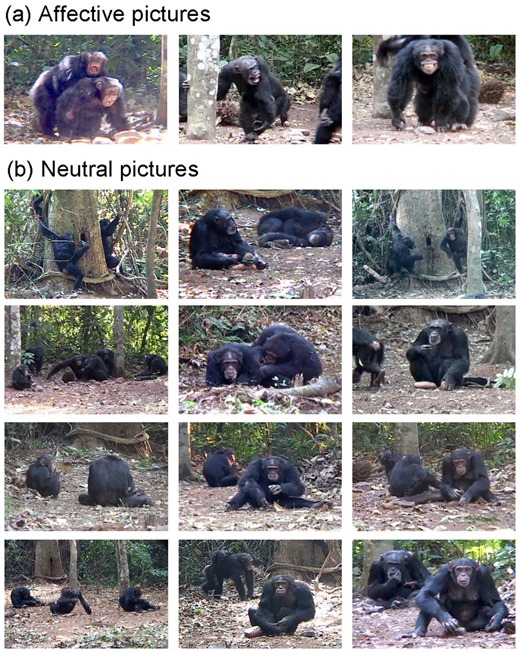In a study that seems to replicate common sense, Japanese scientists have shown that chimpanzees can read the facial expressions of other chimpanzees. However, this is the first time that scientists have been able to create an experiment showing an empathetic response in a nonhuman animal’s brainwaves.
According to researchers at the University of Tokyo and Kyoto University, “the results have implications for the evolutionary foundations of emotional phenomena, such as emotional contagion and empathy.”
The scientists showed pictures of chimpanzees displaying a variety of facial expressions to Mizuki, an 11-year-old female chimpanzee living at the Hayashibara Great Ape Research Institute in Okayama, Japan. Researchers monitored Mizuki’s brainwaves with an electroencephalogram (EEG), apparently the first time we have measured a chimpanzee’s brainwaves without the use of an anesthetic.
The results revealed a wide swing of activity when researchers showed Mizuki pictures of chimpanzees displaying aggressive facial expressions (the affective pictures above). The pattern of the brainwaves was very similar to humans, suggesting to the researchers, “that at least a part of the affective process is similar between humans and chimpanzees.”
Anyone who has ever lived with a dog recognizes that they are also capable of reading the emotional facial expressions of other dogs and, indeed, other species, and then having an emotional response of their own. However, the new experiment shows an electrophysiological response in the brain of a chimpanzee that mimics that of humans. This similarity in brainwave activity and physiology may help lead to a better understanding of the evolutionary success of both chimpanzees and humans.
“Brain science has revealed homologous structures and circuits in human and other mammalian central nerve systems; thus it is reasonable to assume that emotional or affective processes are also shared on some level,” wrote the authors in Scientific Reports. “From an evolutionary perspective, emotion, or affective processing, is thought to be an effective system for generating a rapid, adaptive response to various environmental inputs.”
Note: The Nonhuman Rights Project does not endorse experimentation on captive animals. However, we do quote the results of these experiments when they help make the case that the animals have a level of sentience, self-awareness, and, in some cases, a theory of mind that demonstrates that we should not keep them in captivity in the first place.
